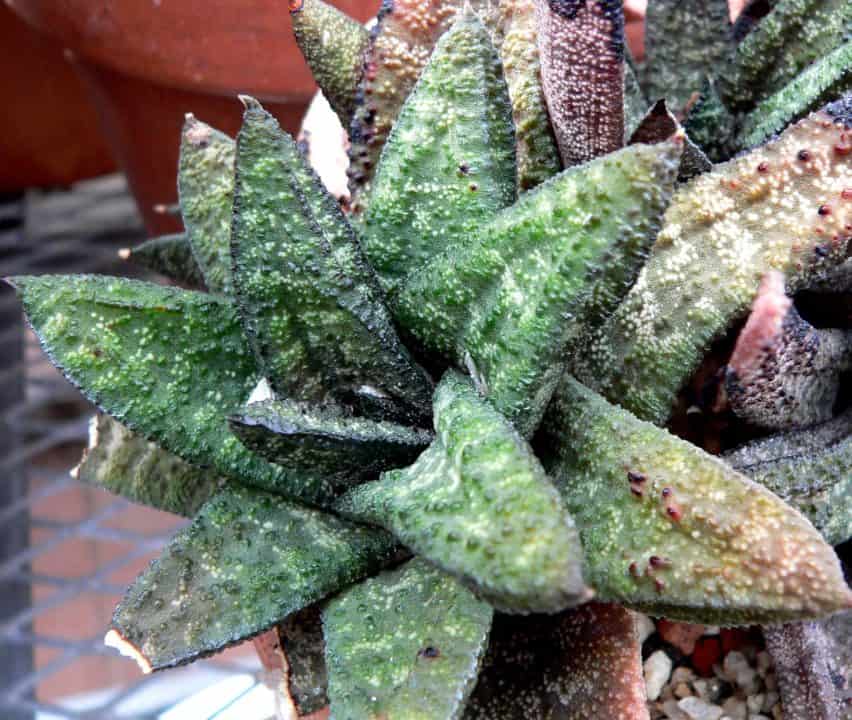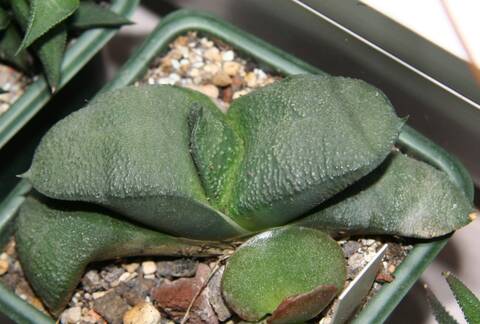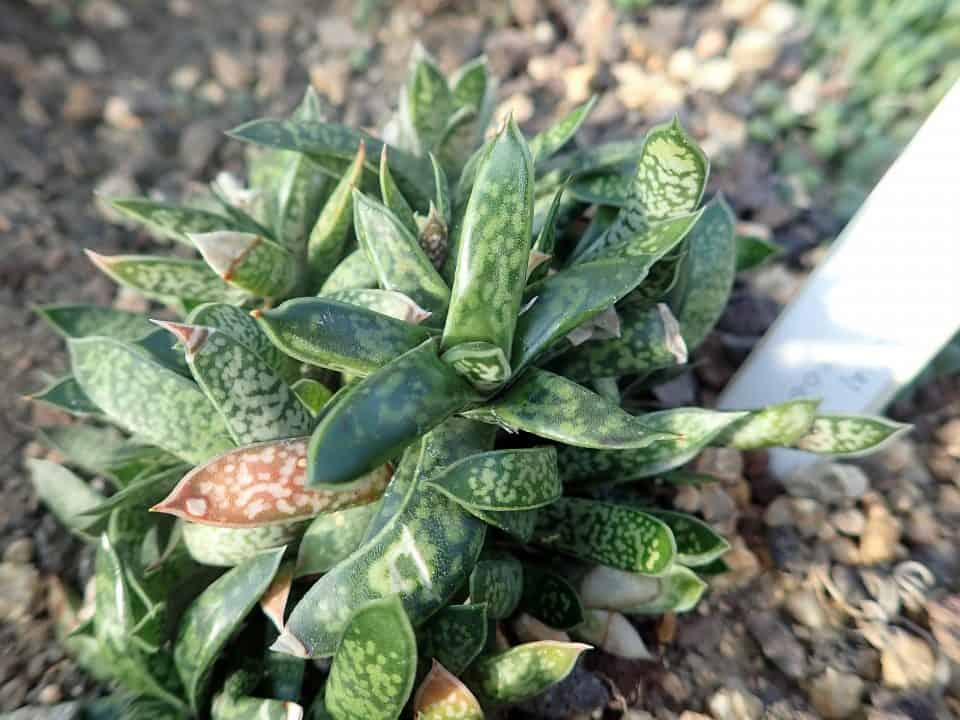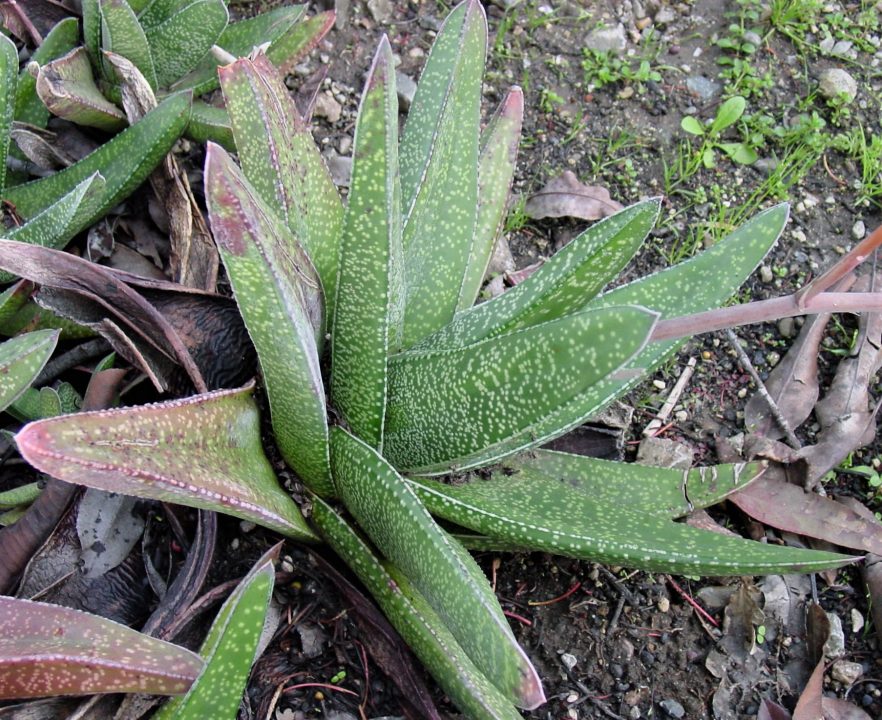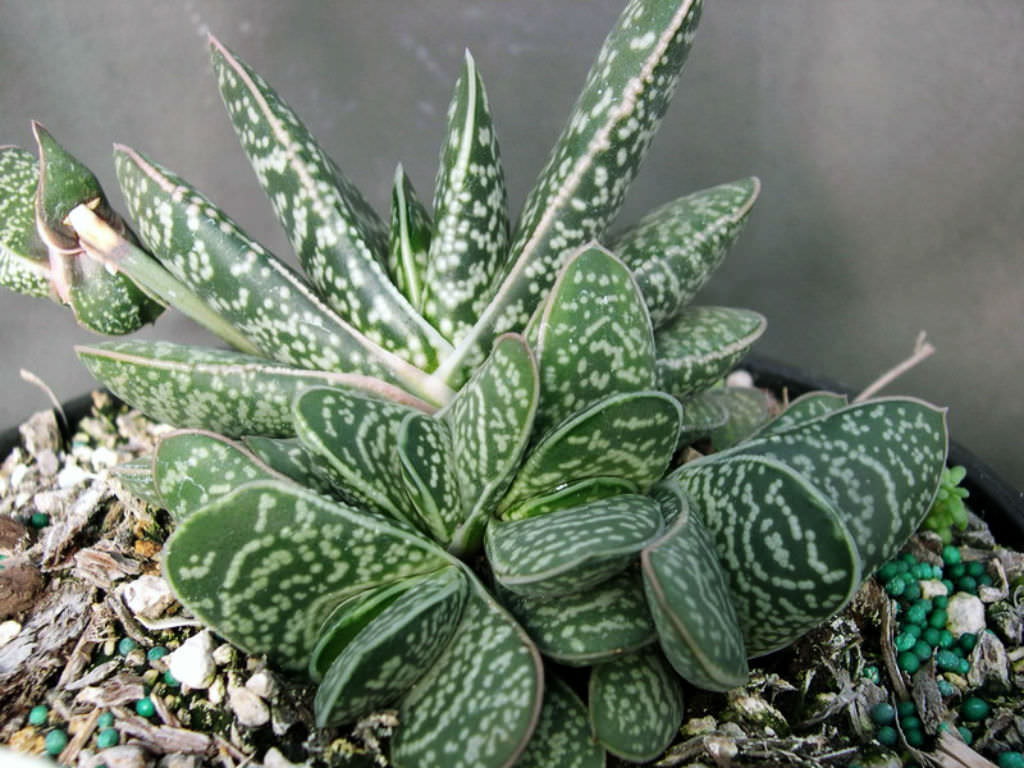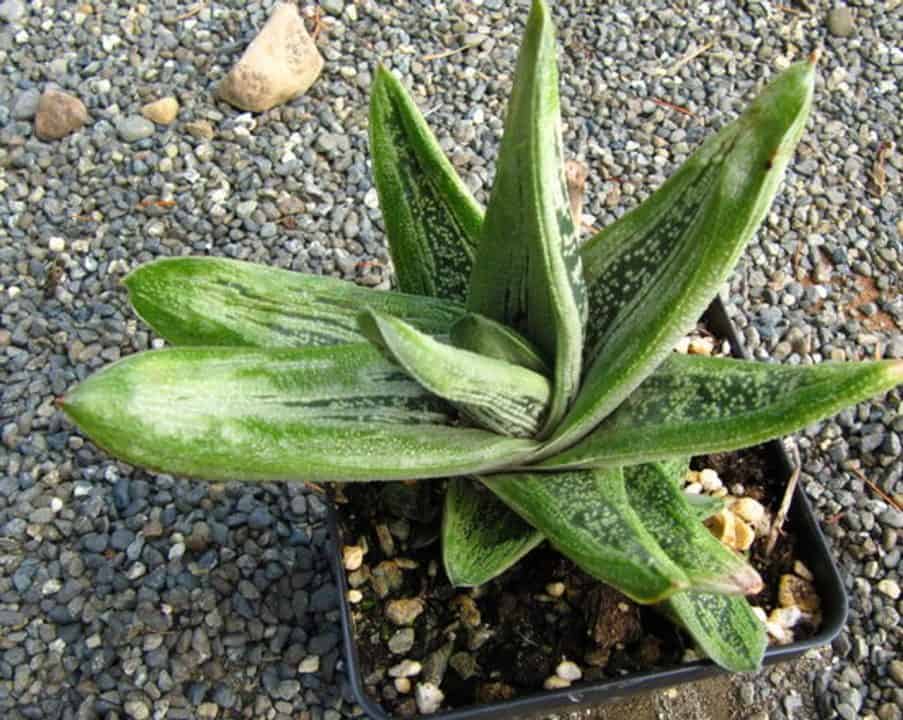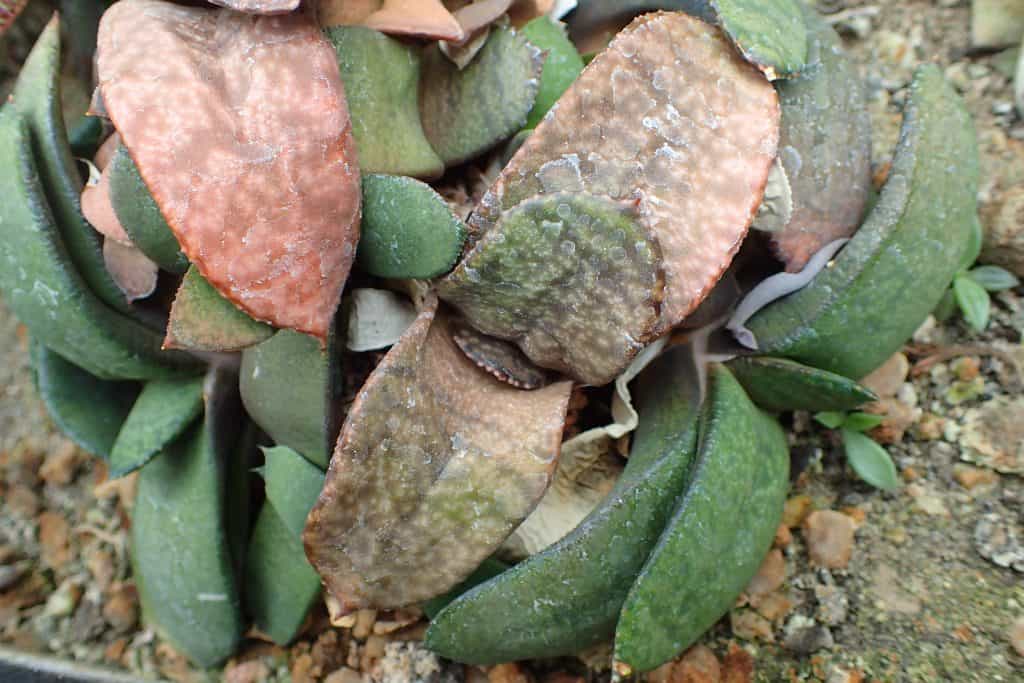Gasteria batesiana, also known as Knoppies gasteria, is an attractive succulent plant with short star-shaped leaves arranged in opposite pairs along the stem, and a flower spike that emerges from the center of each leaf pair. It originates from the Eastern Cape Province of South Africa, and belongs to the Asphodelaceae family.
The knoppies gasteria grows on rocks, tree trunks, fences, and walls in southern Cape Province from Clanwilliam southwards, usually at high altitudes or just below the treeline, often facing the sea.
Origin and distribution
Gasteria batesiana is a small, slow-growing succulent that is native to South Africa. It is commonly found in the Eastern Cape Province, where it grows in rocky, sandy soils. The plant gets its common name, knoppies gasteria, from the small, round bumps that cover its leaves.
These plants are great for beginners because they are easy to care for and tolerate drought conditions well.
They are also popular with people who want to grow their plants indoors or keep them in their car during warmer months. The best time to repot these plants is when they outgrow their container. For best results, use a soil mixture of equal parts of potting soil and coarse sand or perlite.
Gasteria batesiana propagation
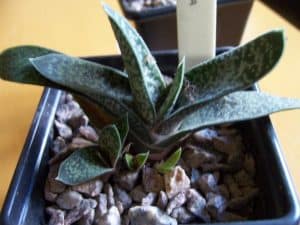
Gasteria batesiana can be propagated by offsets or by leaf cuttings. To propagate by offsets, simply remove the offsets from the mother plant and pot them up in well-draining succulent soil. For leaf cuttings, allow a leaf to be callous over for a few days before potting it up in succulent soil.
Water your cutting sparingly, as too much water can rot the leaves. Leaf cuttings will not develop roots on their own, so use a rooting hormone if you want to give your plants more of an opportunity to grow.
This plant is perfect for beginning succulent enthusiasts who are looking for something that won’t take much maintenance!
Gasteria batesiana care information
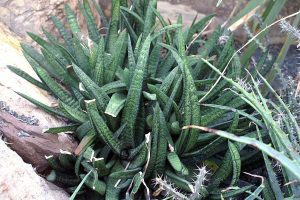
These attractive, low-maintenance plants are perfect for beginning succulent growers. They can be propagated easily from offsets or leaf cuttings, and they look great in mixed succulent arrangements.
Light requirement
Gasteria batesiana grows best in bright, indirect light. If you live in an area with very hot summers, this succulent will appreciate some protection from the midday sun. During the winter months, this plant can tolerate lower light levels. However, if the light is too low, the leaves may start to etiolate (stretch out).
Soil/potting mix
A well-draining, sandy potting mix is ideal for Gasteria batesiana. The soil should be allowed to dry out somewhat between watering. A south-facing windowsill is a perfect spot for this plant, as it enjoys bright light but not direct sun. If the leaves start to get too much sun, they will develop a pinkish hue.
Watering
These plants are succulents, so they don’t need a lot of water. In fact, too much water can be harmful. Water when the soil is dry to the touch, and be sure to empty any drainage dish afterward. If the leaves start to wrinkle, that means the plant is thirsty. Give it more water for about a week, but be careful not to over-water.
Fertilizer
Fertilizing your Gasteria batesiana (Knoppies Gasteria) is important to keep it healthy and promote growth. Use a fertilizer that is high in phosphorus, such as bone meal or a 10-52-10 fertilizer. Apply the fertilizer around the base of the plant, being careful not to get any on the leaves. Fertilize once a month during the growing season. Keep the soil moist but never soggy.
Temperature
The ideal temperature for a Gasteria batesiana is between 70 and 85 degrees Fahrenheit. If the temperature gets too hot, the leaves will start to turn brown and if it gets too cold, the leaves will turn black. The best way to know if your plant is happy is to check the leaves regularly. If they are a healthy green color, then your plant is doing well.
Humidity
Gasteria batesiana is a drought-tolerant plant, but it will appreciate some humidity in the air. If your home is particularly dry, you can increase the humidity around the plant by grouping it with other plants, using a pebble tray, or misting it regularly.
The leaves of the plant are thick and fleshy, which helps it to retain water. However, if the leaves start to wrinkle or the tips turn brown, that’s a sign that the air is too dry.
The ideal humidity range is between 40% and 60%. The best way to test this is by sticking your finger into the soil; if it feels moist, then you’re good. If not, try increasing the humidity.
Pruning
As with most succulents, you’ll want to give your Gasteria batesiana a good pruning every now and then. This will help keep the plant looking its best and encourage new growth. To prune, simply cut off any dead or dying leaves at the base. You can also remove any offsets (baby plants) that are growing too close to the main plant.
Just be sure not to accidentally injure the mother plant when cutting them away.
When to repot
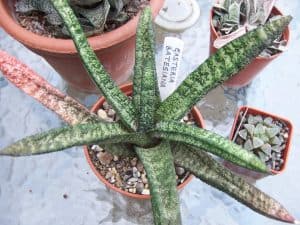
Repotting is typically only necessary every two to three years, and can be done in the spring. Signs that your plant needs a new pot include: roots growing out of the drainage holes, the plant becoming top-heavy and falling over, or the potting mix drying out too quickly.
When repotting, choose a pot that is only slightly larger than the current one, and use a well-draining potting mix. Be careful not to damage the roots when transferring to the new pot.
Dormancy/Winter rest
Gasteria batesiana typically goes dormant during the winter months. During this time, the plant will stop growing and may even lose some of its leaves. It’s important to allow the plant to rest during this time so that it can rejuvenate itself. To care for a Gasteria batesiana during its dormancy, simply reduce watering and fertilizing.
Allow the soil to dry out completely between waterings, and don’t fertilize more than once every few months. You can also keep your plants outdoors during their dormancy in full sunlight and they’ll take care of themselves. If you want to bring your plants indoors, place them near an east-facing window where they’ll get plenty of indirect light all day long.
Gasteria batesiana flower & fragrance
The Gasteria batesiana flowers are white and pink and have a sweet fragrance. They bloom in the summer and fall.
Growth rate
Gasteria batesiana is a relatively slow-growing succulent, so don’t expect it to grow too quickly. Water it when the soil is dry and give it plenty of bright light, but not direct sunlight.
If you live in a hot climate, provide some afternoon shade. This plant is not cold-hardy, so keep it indoors or in a greenhouse during the winter months. With proper care, your Gasteria batesiana should thrive for many years.
Toxicity
These plants are considered non-toxic to humans and animals. However, as with all plants, it is best to keep them out of reach of small children and pets who may not know better than to nibble on them. If ingested, these plants can cause gastrointestinal upset.
Symptoms may include vomiting, diarrhea, and abdominal pain. If you suspect your child or pet has ingested any part of this plant, please call your local poison control center or emergency room immediately.
USDA hardiness zones
Gasteria batesiana thrives best in USDA hardiness zones 9-11. It needs to be placed in well-drained soil but does not need much water or fertilizer. Like other succulents, it does not like high heat or cold and should be kept out of direct sunlight.
Pests and diseases
Gasteria batesiana is susceptible to mealybugs and scale. Mealybugs are small, white, wingless insects that suck the sap out of plants. They can be controlled with insecticidal soap or horticultural oil.
Scales are small, brownish-black insects that suck the sap out of plants. They can be controlled with horticultural oil or neem oil.
The plant can also be sprayed with a mix of water and bleach to get rid of any pests on the leaves. It is not possible for an infestation to occur on a gasteria because it has no flowers which attract bugs like bees and wasps.
